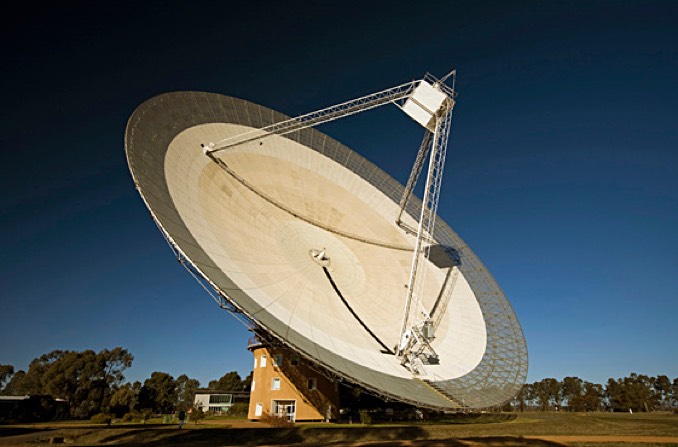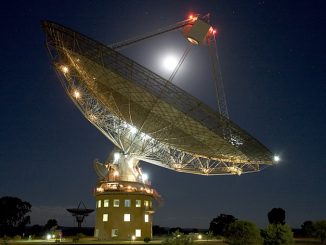
Breakthrough Listen, dedicated to scanning the heavens for signs of intelligent life, has kicked off a survey of millions of stars in the plane of the Milky Way using a new “multi-beam” receiver and other digital equipment at the CSIRO Parkes Radio Telescope in New South Wales Australia that can handle 130 gigabits of data per second.
The Breakthrough Listen initiative began observations at Parkes in 2016, focusing on stars within a few light years of Earth using receivers that could “listen” to a single point in the sky at a time. The new equipment can analyse 100 million channels in each of 13 beams, making the new Parkes campaign one of the most comprehensive to date.
Parkes will carry out 1,500 hours of observations in 2018, resulting in an expected 100 petabytes of data that will be searched for signs of extraterrestrial technology. The new equipment and its software should be able to distinguish between potentially interesting signals from deep space and those of merely human origin.
Along with listening for ET, the Breakthrough Listen equipment also will be on the lookout for fast radio bursts, or FRBs, mysterious, very brief high-energy events that seem to occur at extra-galactic distances.
“With these new capabilities, we are scanning our galaxy in unprecedented detail,” said aid Danny Price, Parkes Project Scientist with Breakthrough Listen at the University of California at Berkeley, “By trawling through these huge datasets for signatures of technological civilisations, we hope to uncover evidence that our planet, among the hundreds of billions in our galaxy, is not the only one where intelligent life has arisen.”



